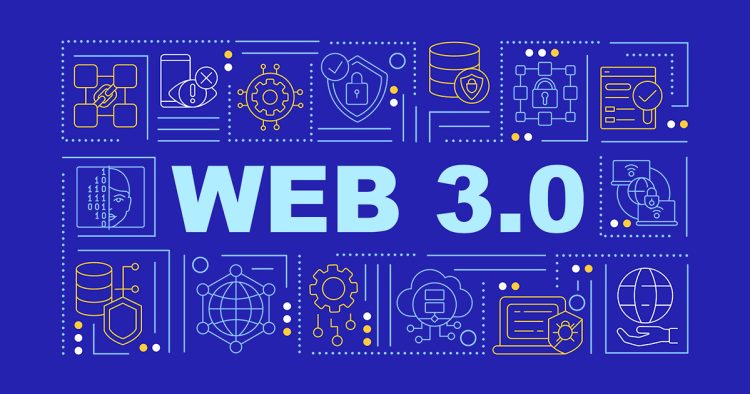As blockchain technology continues to evolve beyond its cryptocurrency origins, a new paradigm has emerged at the forefront of digital innovation: Web 3.0. Often referred to as the “decentralized web,” Web 3.0 represents a vision of the internet where users have more control over their data, identity, and interactions—largely powered by blockchain infrastructure.
This article explores whether Web 3.0 is poised to become the next critical breakthrough in blockchain development, and what that could mean for the future of the internet and the global digital economy.
1. What Is Web 3.0 and How Does It Relate to Blockchain?
Web 3.0 is commonly defined as the third generation of internet services, characterized by:
- Decentralization: Applications are not controlled by centralized platforms like Google, Facebook, or Amazon, but instead operate on distributed networks.
- User ownership: Individuals own and control their data, digital identities, and even parts of the platforms they use.
- Token-based economies: Value exchange is native to the web, powered by blockchain-based tokens or cryptocurrencies.
- Interoperability and automation: Smart contracts, decentralized identity, and open standards allow services to integrate and function autonomously.
Blockchain is the backbone of this new architecture, enabling trustless systems, transparent governance, and economic incentives without the need for centralized intermediaries.
2. Limitations of the Current Web and the Need for a New Model
Today’s internet, known as Web 2.0, has delivered immense value but also introduced critical concerns:
- Data monopolies: A handful of tech giants control user data, digital identities, and platform access.
- Privacy erosion: Users’ personal information is routinely collected, monetized, and sometimes exposed in data breaches.
- Lack of ownership: Content creators often surrender rights and revenue to platforms in exchange for visibility.
- Platform risk: Centralized entities can change rules, remove access, or censor content at will.
Web 3.0 aims to solve these problems by shifting control from corporations to individuals, with blockchain enabling this power shift through transparency, programmability, and distributed governance.
3. The Role of Blockchain in Enabling Web 3.0
Blockchain technology contributes several foundational elements that make Web 3.0 possible:
- Decentralized applications (dApps): Run on public or permissioned blockchains, free from centralized control.
- Smart contracts: Self-executing code that automates rules and agreements between parties.
- Decentralized identity (DID): Users can manage their own digital identities without relying on third-party logins.
- Tokenization: Cryptographic tokens can represent ownership, access rights, or participation in governance.
These elements empower a more democratic and resilient internet ecosystem—where users aren’t just consumers, but also stakeholders and co-creators.
4. Potential Breakthrough Areas in Web 3.0
Several sectors are already demonstrating how Web 3.0 could reshape the digital landscape:
- Social media: Platforms like Lens Protocol and Farcaster enable decentralized social networking where users own their content and followers.
- Finance: DeFi applications allow peer-to-peer lending, trading, and yield generation without banks or brokers.
- Digital identity: Self-sovereign identity systems let users control how and where their personal data is used.
- Creator economy: NFTs and decentralized marketplaces let artists and creators earn directly from their audiences without intermediaries.
- Governance: DAOs (Decentralized Autonomous Organizations) introduce new models of online collaboration and decision-making.
These use cases demonstrate Web 3.0’s disruptive potential—and its dependence on blockchain infrastructure.
5. Challenges on the Road to Mass Adoption
Despite the promise, several obstacles must be overcome before Web 3.0 becomes mainstream:
- Scalability: Many blockchain networks still struggle with throughput and latency, though layer-2 solutions and new consensus mechanisms are improving performance.
- User experience: Wallets, private keys, and token management remain complex for non-technical users.
- Security risks: Smart contract vulnerabilities and phishing attacks have led to major losses in Web 3.0 applications.
- Regulatory uncertainty: Questions about jurisdiction, digital assets, data protection, and taxation are not yet fully resolved.
- Fragmentation: Multiple competing blockchains and standards can make interoperability and seamless user experiences difficult.
Addressing these issues is critical for blockchain—and Web 3.0—to reach their full potential.

6. A Catalyst for the Next Blockchain Breakthrough
Web 3.0 isn’t just a product of blockchain—it’s a driver of its next phase. As more users demand greater control, privacy, and fairness online, the pressure to develop scalable, secure, and user-friendly blockchain infrastructure will intensify.
This demand is likely to spur:
- Accelerated innovation in blockchain protocols
- Greater investment in blockchain-native development tools
- More collaboration between public and private sectors
- New global standards for digital identity, interoperability, and token regulation
In this way, Web 3.0 is not only a potential breakthrough in itself—it may be the engine that propels blockchain into every corner of the digital economy.
Conclusion
Web 3.0 represents a major paradigm shift for the internet, and its foundation is inseparably linked to blockchain technology. By decentralizing control, enabling digital ownership, and embedding trust at the protocol level, Web 3.0 may indeed be the next breakthrough in blockchain’s evolution.
While technical, legal, and adoption challenges remain, the momentum is clear. As innovation continues and real-world use cases expand, Web 3.0 could fundamentally reshape how the global economy interacts with digital infrastructure, empowering individuals and redefining value in the digital age.
















































